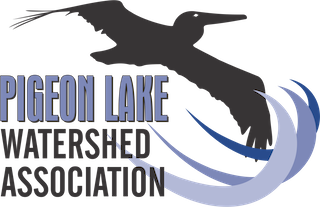
Obtaining Permits
Naturalize Your Lot: A Guide to Lake-Friendly Landscaping
Be Lake Informed
Obtaining Permits
Minimizing Your Footprint
Shoreline Restoration
Planting for the Lake
Preventing Noxious Weeds
Maintaining Lake Lawns
Did You Know?
Property lost from erosion or increased water levels becomes part of the waterbody and ownership reverts back to the province
It is important to protect lakes from the effects of development. Know what is allowed and how to undertake projects that are legal and work to protect the health of the watershed and the lake.
Before You Start - Get Authorization
Check with the local authority about municipal land use bylaws, zoning regulations, environment reserves and development permit requirements even for minor changes such as taking down trees, adding a parking area, gazebo or sauna.
Know your property boundaries. If property pins are no longer visible you may need to contact an Alberta surveyor.
Identify other regulatory jurisdictions and permitting requirements e.g. contact Alberta Environment and Parks for authorizations related to shoreline alterations.
Plan, Plan, Plan….
Apply for permits well in advance e.g. apply in the fall for projects starting the following summer.
Be prepared to include a legal land description, site plan and other documentation in the permit application. This may require paying a qualified professional(s).
Check for restrictive periods for fish and birds e.g. Migratory Bird Act and Fisheries Act.
Source: Living on the Waterfront: The Alberta Guide for Shoreline Living
Regulations
Construction and landscaping projects within the Pigeon Lake watershed are subject to regulations that protect the environment. This includes municipal land use bylaws, provincial regulations, and/or federal regulations. Regulations relate to land cover and biodiversity, phosphorus management, clean runoff, groundwater quality, shoreline and other riparian areas.
Did you know - All Pigeon Lake municipalities require a development permit for clearing vegetation.*
Other types of bylaws that apply to landscaping projects include setbacks from watercourses and water bodies, sediment and erosion control measures, and standards for waste water management.
*Note: the bylaw specifications related to clearing vegetation is specific to each municipality.
Environmental Reserves
Many municipalities at Pigeon Lake have designated Environmental Reserves, Environmental Reserve Easements, or Conservation Reserves to protect sensitive areas such as wildlife corridors, significant tree stands, wetlands or shorelines. Reserves may be adjacent to the waterbody or inland. The specifics of a reserve will be registered on the title of a parcel of land e.g. an environmental easement. The easement is designated in favour of the municipality and the land cannot be altered or disturbed without permission.
Note: Municipalities can have other types of reserve land for non-environmental purposes.
Permission is required to make any changes to reserve land - Check the Land Title
Lake Shore Properties
Shoreline property lines typically extend to the natural boundary of the lake, or the Legal Bank. Below the legal bank, the shoreline and lake is considered public land under the Alberta Public Lands Act. Keep in mind that the natural boundary that marks your property line can move over time.
If you are contemplating modifying the shoreline of your lot, it is recommended to contact an Alberta surveyor to ensure that your project is within your property boundaries, as damaging the public lands that constitute the bed and shore of the lake can have costly repercussions.
Unsure if Your Project Requires Permits or Approval?
A. Under the Municipal Government Act, the municipality can regulate vegetation control and development projects. Check your local municipality for specific regulations:
B. There are a number of regulations set out by the provincial government that may be applicable to landscaping projects at the lake. Check AB Environmental Regulations
Fisheries (Alberta) Act
In agreement with the federal regulations, this outlines the fish use licensing for different purposes.
Public Lands Act
Beach development and sand placement, aquatic vegetation control, placement of boat docks or any other structures on the lake bed or shore, and shoreline development.
Water Act
Beach development, aquatic vegetation control, stormwater management projects, dredging, and shoreline development. Diversion of water channels.
c. Consult the Federal Regulations
Migratory Birds Convention Act
Shoreline development and aquatic vegetation control.
Fisheries Act
Aquatic vegetation control, beach development and sand placement, dredging or in-filling, depositing harmful materials into the water and destruction of fish habitat.
Navigational Protection Act
Shoreline development, which includes erosion control measures and developing permanent structures.
Report an Environmental Emergency / Regulation Violation
AB Environmental Hotline 1-800-222-6514
Additional Resources
Living on the Waterfront: The Alberta Guide to Shoreline Living. 2018. Nature Alberta.
THE LAW AND THE LAKE: Navigating Alberta’s Regulatory Framework
•https://www.alberta.ca/shorelands.aspx
•https://www.alberta.ca/lakeshores.aspx
•https://open.alberta.ca/publications/respect-our-lakes-lake-legislation-in-alberta
PLWA Self-Guided Property Assessment Tool
Individually, property by property, the impact of land development properties does not seem significant. However over time and space, small, incremental changes lead to noticeable impacts. These are called cumulative effects.
- Alberta Clean Runoff Action Guide
References
Living on the Waterfront: The Alberta Guide to Shoreline Living. 2018. Nature Alberta.
THE LAW AND THE LAKE: Navigating Alberta’s Regulatory Framework


